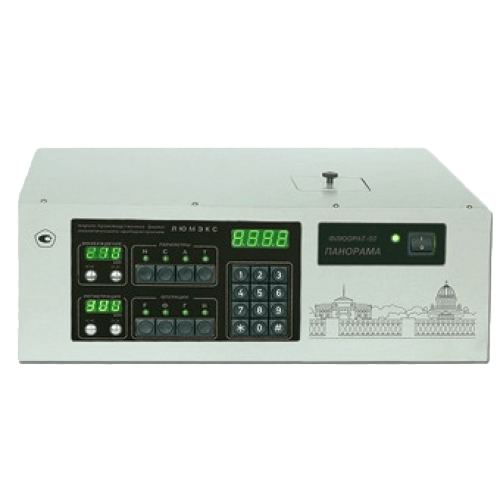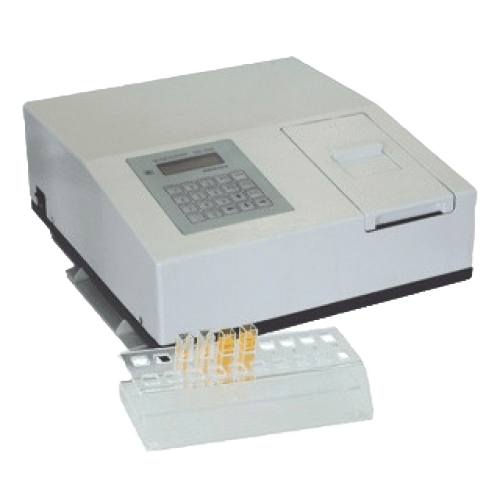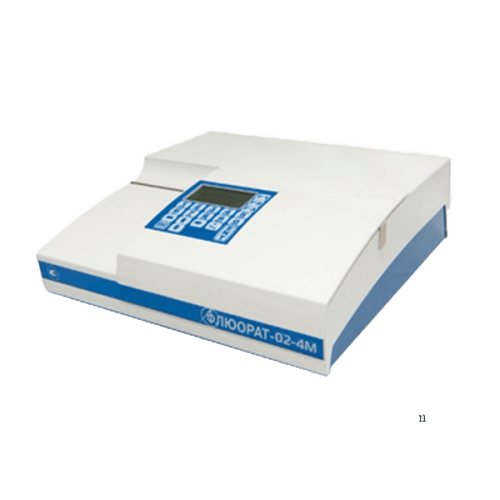Description
As a gift – free delivery in Moscow and in some regions of Russia!
The selection of light fluxes is carried out by specially selected light filters. As a light source, a high-pressure pulsed xenon lamp is used, which provides sufficient light fluxes in the entire spectral range of optical methods – from hard ultraviolet to the red border of visible light. The main operating mode of the analyzer is a fluorimeter. The device can also work as a photometer or chemiluminometer. Cuvettes 10×10 mm for fluorimetry and 10×20, 10×40 mm for photometry can be installed in the cuvette compartment.
The analyzer operates on AC power or a 12 V battery. This allows it to be used as part of mobile laboratories. Can be measured by fluorescence or absorption photometry.
Distinctive features:
- low limits of determination;
- high selectivity;
- a wide range of determined indicators;
- reduction of analysis time and reagent consumption;
- saving calibrations in non-volatile memory;
- multifunctionality (works as a fluorimeter, chemiluminometer, phosphorescence measuring device, photometer, nephelometer).
Areas of use
Environmental studies:
- express analysis of water in reservoirs and streams for the content of pollutants;
- screening examinations of water areas with a risk of pollution by oil products;
- monitoring studies of the content of pollutants in water bodies;
- control of contamination of soils and soils with oil products and heavy metals.
Sanitary Research:
- control of the content of toxic substances and compounds in drinking and waste waters;
- control of air pollution by aerosols and volatile substances (after samples are transferred to the liquid phase).
Geology:
- research of hydrogeological processes using the “fluorescent label” method.
Technology:
- control of the content of residual amounts of oil products in liquid oxygen;
- control of the purity of technological solutions.
Medicine:
- routine analyzes of biological media.
Food industry:
- Control of food products for the content of vitamins B1, B2, C.
SPECIFICATIONS:
| Measurement time | no more than 16 s |
| Used cuvette types – K10, K20, K40 (K20 and K40 only for analysis by photometry | for samples, volume 3, 6.12 cm |
| The volume of the analyzed sample (in a standard cuvette K10) | up to 3 cm3 |
| The limit of the permissible value of the absolute error when measuring the transmittance of samples in the range of 10-90% | 0,02 |
| The limit of the permissible value of the absolute error when measuring the mass concentration of phenol in water in the range of 0.01-25 mg / dm3 is calculated by the formula: (C-concentration) | 0.004+0.10*S mg/dm |
| Operating spectral range (excitation and transmission channel) | 200-900 nm |
| Operating spectral range (registration channel) | 250-900 nm |
| Ambient temperature | 10-35 °C |
| Average service life | at least 5 years |
| MTBF | at least 1000 hours |
| Dimensions | no more than 330x300x120 mm |
| Weight | no more than 8 kg |
| Food | 220 V |
| Power supply from an independent source | 12 V |
| Power consumption | no more than 36 W |
| Current frequency | 50 Hz |
Fluorat 02-3M analyzer allows you to solve problems:
- Determination of aluminum in water
- Determination of anionic surfactants (surfactants) in water
- Determination of anti-caking agent lilamin in mineral fertilizers
- Determination of beryllium in water
- Determination of boron in water
- Determination of vanadium in water
- Determination of vitamin B1 (thiamine) and vitamin B2 (riboflavin) in food products, food raw materials and dietary supplements
- Determination of manganese in water
- Determination of copper in water
- Determination of copper in air
- Determination of mineral oils in gases and cryoproducts
- Determination of molybdenum in water
- Determination of water turbidity
- Determination of arsenic in water
- Determination of oil products in water
- Determination of petroleum products in soil
- Determination of nickel in water
- Determination of nitrite in water
- Determination of total iron in water
- Determination of total chromium and chromium (VI) in water
- Determination of tin in samples of natural, drinking and waste water
- Determination of selenium in drinking water
- Determination of selenium in samples of food products and food raw materials, animal feed and raw materials for its production
- Determination of hydrogen sulfide in the air
- Determination of phenol in sources of air pollution
- Determination of phenols in water
- Determination of phenols in the air
- Determination of fluorescein in water
- Determination of formaldehyde in water
- Determination of formaldehyde in the air
- Determination of formaldehyde in sources of air pollution
- Determination of hydrogen fluoride in air
- Determination of chemical oxygen demand (COD) in water
- Determination of cyanides in water
- Determination of zinc in water
- Determination of zinc in the air
- Determination of vitamin C in food products and food raw materials
- Determination of cationic surfactants (SAS) in water




